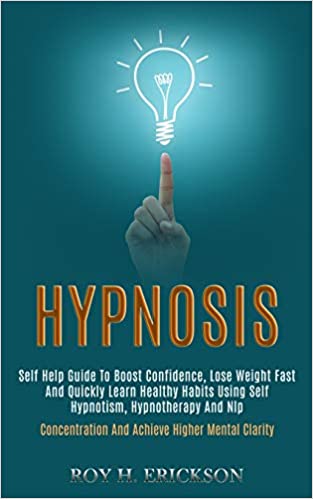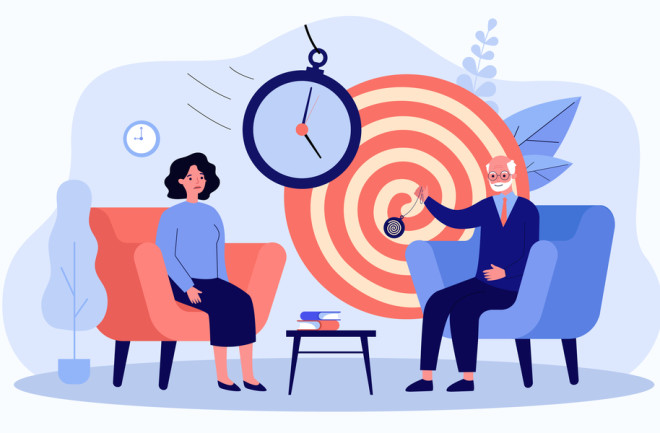
Hypnosis allows you to relax deeper and have more insight. It allows you to communicate directly through the subconscious, bypassing your critical thinking mind. Hypnosis can cause you to experience altered consciousness and suggestibility. Learn more about how hypnosis can be used to aid you therapist.
Hypnosis will allow you to enter the theta brainwave frequency. This frequency is the most creative, and it's just below sleep. By going into this trance state, hypnotherapists can easily bypass parts of the mind that are resistant to change. While you're under hypnosis, the changes you want to make become part of your memory. You'll feel relaxed in a clinical setting and your therapist will be able to help you become more familiar with the suggestions.

The therapist will often offer additional post-hypnotic suggestions. These suggestions will be with you for a long time after the session is finished. This helps you maintain the changes you've made. These suggestions will help you in the long run. You can expect to experience a surge in energy and a better sense of well-being once you are in a trance. The therapist will address the part of you that is awake and willing to make changes.
Although hypnosis may improve your overall health and life quality, some studies have shown that it can also be used to treat certain medical conditions. People have used hypnosis for weight loss, controlling their addictions, and to overcome phobias. Although it doesn't cure all conditions, it may be worth trying hypnosis if there are any weight-loss, pain, fibromyalgias, or other health issues.
While there are some benefits to hypnosis and hypnotherapists, there are also some downsides. The hypnotist might not be able to tell you that you have been placed under hypnosis. Instead, he will use an inducing trance to get you to concentrate on one goal. The "hypnotic cues", a technique that guides you to relax, will be used by your therapist.

Hypnosis is an effective treatment for many ailments. However, it is important to choose a trusted therapist. A qualified Hypnotherapist will take the time to get to know you and your situation so that they can use hypnosis effectively to help you. You must trust your therapist. Search the Internet to find a reputable and experienced hypnotherapist if you are unsure who to hire.
Despite its many benefits, hypnosis isn't the only therapist-patient relationship that can benefit from hypnosis. Hypnosis can be used to help patients heal from psychological or emotional problems. To ensure the best possible results, a therapist may be hypnotized even without anesthesia.
FAQ
Why is it important that we live a healthy and happy life?
Having a healthy lifestyle helps us live longer, happier lives. Healthy eating habits, regular exercise, healthy sleep habits, stress management, and good sleep habits can help to prevent heart disease, stroke, diabetes, cancer, and other serious diseases.
A healthy lifestyle will also improve our mental health by helping us cope better with everyday stresses. A healthy lifestyle can also help you feel and look younger.
What can you do for your immune system to improve?
The human body consists of trillions of cells. These cells collaborate to create organs, tissues and other functions. One cell is replaced by another when it dies. The chemical signals known as hormones are used to communicate between cells. Hormones regulate all bodily processes, from growth and development to metabolism and immunity.
Hormones are chemicals secreted by glands throughout the body. They travel through the blood stream and act like messengers to control how our bodies function. Some hormones are produced internally while others are made outside of the body.
Hormone production occurs when hormone-producing cells release their contents into your bloodstream. Once hormones become active, they move throughout the body until reaching their target organ. Sometimes hormones stay active for only a short time. Some hormones remain active for longer periods of time and can continue to have an impact on the body's function long after they are gone.
Some hormones can only be produced in large quantities. Others are made in small quantities.
Some hormones are only produced at certain times in your life. Estrogen is one example. It's produced in puberty, pregnancy and menopause. Estrogen assists women with breast development, bone density, and osteoporosis prevention. It is also known to promote hair growth and keep skin soft and smooth.
How can my blood pressure be controlled?
You must first determine the cause of high blood pressure. Next, take steps that will reduce the risk. This could mean eating less salt, losing some weight, taking medication, and so on.
You also need to make sure you are getting enough exercise. Walking can be a good alternative to regular exercise if time is tight.
If you're not happy with how much exercise you're doing, then you should consider joining a gym. It's likely that you will want to join a gym with other people who are working towards the same goals as you. It's easier to stick to an exercise routine when you know someone else is going to see you at the gym.
What is the difference between sugar and fat?
Fat can be a source of energy that is obtained from food. Sugar is naturally found in fruits and veggies. Both fats (and sugars) have the same calories. But, fats have more calories than sugars.
The body stores fats and they can lead to obesity. They may cause cholesterol buildup and lead to strokes or heart attacks.
Sugars can be quickly absorbed by your body and give you instant energy. This causes blood glucose to rise. High blood glucose levels are dangerous as it can increase the likelihood of developing type 2 diabetes.
What are 10 healthy habits you can adopt?
-
Breakfast is a must every day.
-
Don't skip meals.
-
Be balanced.
-
Drink lots of water.
-
Take care to your body.
-
Get enough sleep.
-
Stay away from junk foods.
-
Daily exercise
-
Have fun
-
Make new friends
How does an antibiotic work?
Antibiotics are drugs which destroy harmful bacteria. The treatment of bacterial infections is done with antibiotics. There are many different types of antibiotics. Some are administered topically, while others can be taken orally.
People who have been exposed are often given antibiotics. One example is if someone has had chickenpox and wants to prevent shingles. Penicillin might also be administered to someone with strep throat. This will help prevent the possibility of developing pneumonia.
A doctor should give antibiotics to children. Children are more susceptible to side effects from antibiotics than adults.
Diarrhea, the most common side-effect of antibiotics, is probably diarrhea. Other possible side effects include stomach cramps, nausea, vomiting, allergic reactions, headaches, dizziness, and rashes. These symptoms generally disappear once the treatment has finished.
Statistics
- In both adults and children, the intake of free sugars should be reduced to less than 10% of total energy intake. (who.int)
- WHO recommends consuming less than 5% of total energy intake for additional health benefits. (who.int)
- Extra virgin olive oil may benefit heart health, as people who consume it have a lower risk for dying from heart attacks and strokes according to some evidence (57Trusted Source (healthline.com)
- According to the Physical Activity Guidelines for Americans, we should strive for at least 150 minutes of moderate intensity activity each week (54Trusted Source Smoking, harmful use of drugs, and alcohol abuse can all seriously negatively affect your health. (healthline.com)
External Links
How To
What does the word "vitamin" mean?
Vitamins are organic substances found naturally in food. Vitamins are necessary for us to absorb nutrients in the foods we consume. The body cannot make vitamins; therefore, they must be obtained from food.
There are two types: water-soluble and fat-soluble vitamins. Water-soluble vitamins dissolve quickly in water. Some examples include vitamin C,B1 and B2 vitamins (thiamine), B2 and riboflavin, B3 and B6 vitamins (niacin), folic acids, biotin, pantothenic acids, and cholesterol. Fat-soluble vitamins are stored in the liver, fatty tissue and kidneys. You can find vitamin D, E K, A, beta carotene, and other fat-soluble vitamins.
Vitamins are classified according their biological activity. There are eight main groups of vitamins.
-
A – Essential for normal growth, and the maintenance of good health.
-
C - important for proper nerve function and energy production.
-
D - essential for healthy bones, teeth, and gums.
-
E - needed for good vision and reproduction.
-
K – Required for healthy nerves & muscles.
-
P – vital for building strong bones.
-
Q - aids digestion, absorption and absorption iron
-
R - necessary for making red blood cells.
The recommended daily allowance of vitamins (RDA), varies according to age, gender, physical condition, and other factors. The U.S. Food and Drug Administration has established the RDA values.
For adults aged 19 and older, the RDA for vitamin B is 400 micrograms daily. Because it is essential for the development of the fetus, pregnant women should consume 600 micrograms per daily. Children ages 1-8 require 900 micrograms per day. Children under 1 year old require 700 micrograms daily, while infants over one year old need 500 micrograms every day. This decreases between 9 and 12 months.
Children aged between 1-18 years require 800 micrograms of sugar per day, while overweight children need 1000 micrograms. Children who are underweight receive 1200 micrograms every day to meet their nutritional requirements.
Children ages 4-8 years who have been diagnosed with anemia need 2200 micrograms per day of vitamin C.
Adults over 50 years of age need 2000 micrograms per day for general health. Mothers who are pregnant, nursing, or have a high nutrient need will require 3000 micrograms a day.
1500 micrograms are required daily by adults over 70 because they lose approximately 10% of their muscle each decade.
Women who are pregnant or lactating need more than the RDA. Pregnant women need 4000 micrograms per dayduring pregnancy and 2500 micrograms per day after delivery. Breastfeeding mothers need 5000 mg per day when breastmilk is being produced.